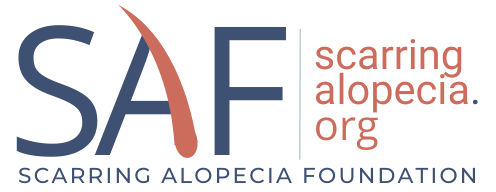Improving Hairdressers’ knowledge of scarring alopecia with educational video
Article Summary by Wonder Edem| MD Candidate 2024 |University of California, Riverside School of Medicine
Early detection and treatment of scarring hair loss are essential to decrease permanent damage to hair/hair follicles and better outcomes long term. As hairdressers often have regular, close observations of the hair and scalp of their customers, they have a unique role in early detection of hair disorders. Prior studies reported hairdressers had increased knowledge and confidence when shown an educational video on melanoma of the scalp and hair, as well as general hair loss conditions. Among those hair disorders, scarring alopecia may not be easily detectable to people without training. In this study, Ali et al wanted to see the difference in hairdresser’s confidence in recognizing scarring alopecia, including Lichen planopilaris (LPP), Frontal fibrosing alopecia (FFA) and Central centrifugal cicatricial alopecia (CCCA) before and after watching an educational video.
This study recruited 40 hairdressers with an average of 20 years’ experience and an average age of 44 years old. Each participant completed a pretest questionnaire to assess their knowledge on clinical signs of scarring alopecia. Afterwards, they watched an educational video about signs and symptoms of scarring alopecia, when to send a client for a dermatology consult, then completed a posttest questionnaire.
The data showed that 75% of the hairdressers received little to no training on hair loss in their cosmetology school, 78% of them had very little to no exposure to LPP, FFA or CCCA, while 68% would get asked about hair loss on a daily or weekly basis. When comparing the pre- and posttest results, the posttest group had significant improvement in knowledge about clinical findings of scarring hair loss, such as ‘perifollicular erythema and scale’ (50% vs 90%). Hairdressers had overall increased knowledge in all aspects of hair loss after the test and more confidence in recognizing LPP, FFA, and CCCA.
Given that hairdressers are regularly seeing clients’ hair and scalp, they are in an important position to be targeted in education of scarring alopecia. Although this data is from a smaller sample size, it highlights that educational interventions can improve hairdressers’ confidence and knowledge in life altering conditions like scarring alopecia.
See full article here.
References: Ali S, Collins M, Pupo Wiss I, Burns L, Hagigeorges D, Pickford J, Senna M. Improving hairdressers’ knowledge and identification of scarring alopecia using an educational video. Int J Womens Dermatol. 2023 Apr 14;9(2):e079. doi: 10.1097/JW9.0000000000000079. PMID: 37073365; PMCID: PMC10106178.
